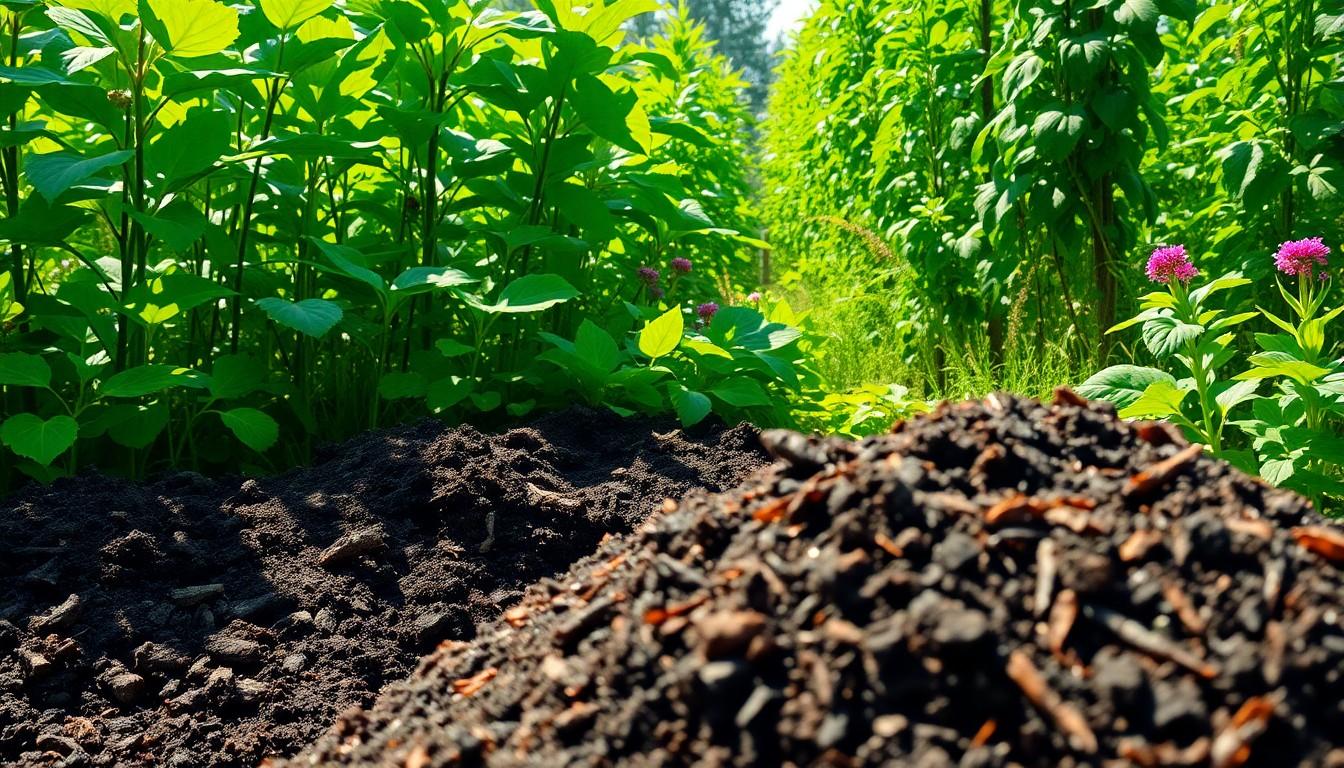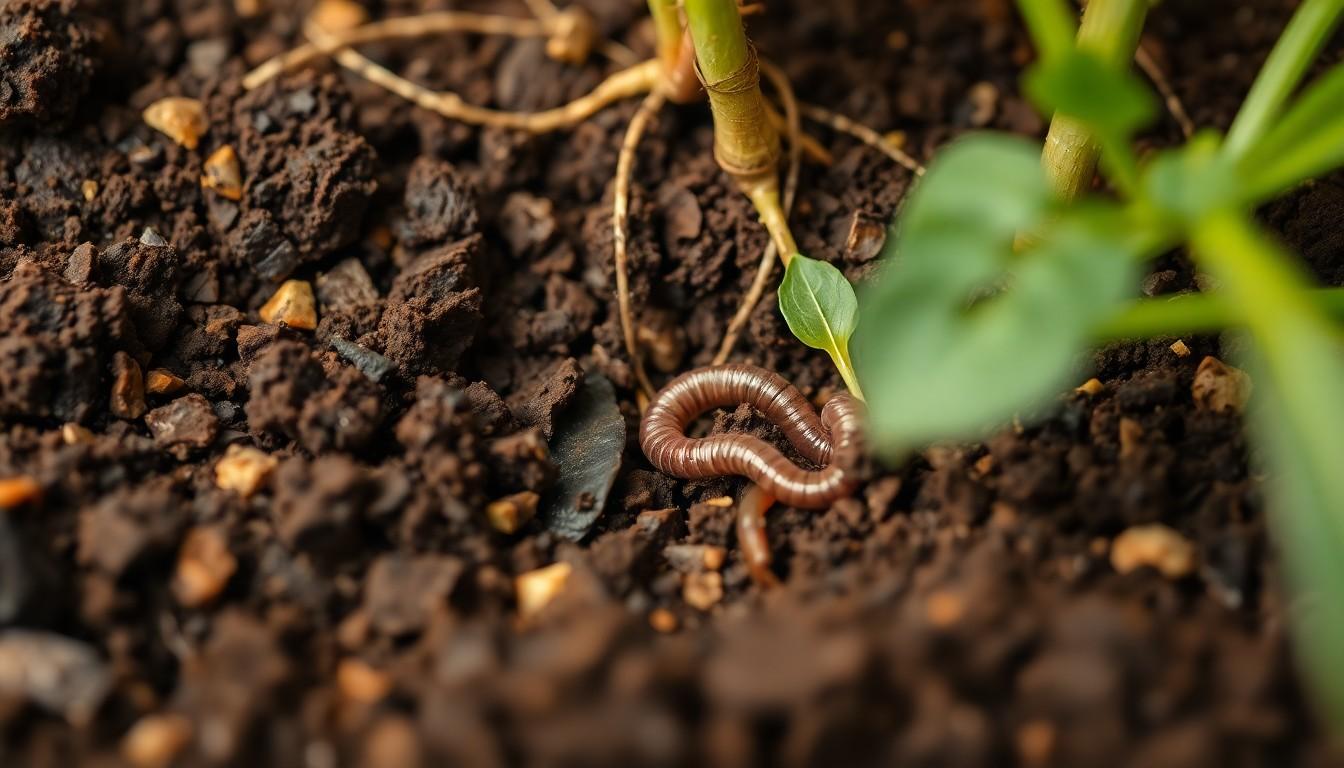Physical Address
304 North Cardinal St.
Dorchester Center, MA 02124

In the world of gardening, soil is the unsung hero. It’s not just dirt; it’s a bustling metropolis of microorganisms, nutrients, and potential. When it comes to organic gardening, the right soil can mean the difference between a thriving garden and a sad patch of wilted greens. Who knew that dirt could hold such power?
Organic gardening soil refers to a blend of natural materials that foster healthy plant growth. This soil type supports beneficial microorganisms, enhancing the garden’s ecosystem.
Organic gardening soil consists of compost, aged manure, and natural amendments. This combination provides nutrients and improves soil structure. Soil’s health influences plant growth and resilience. Healthy soil retains moisture, supports aeration, and promotes root development. Gardeners realize that quality soil plays a vital role in organic gardening success. Using organic materials maintains soil fertility and ensures a sustainable growing environment.
Organic gardening soil offers numerous benefits. It enhances nutrient content through natural breakdown processes. This soil type encourages beneficial organisms, which contribute to natural pest control. Improved moisture retention reduces the need for frequent watering. Using organic soil also prevents chemical runoff, promoting environmental health. Overall, organic gardening soil creates a thriving atmosphere for diverse plant life. Gardeners enjoy a lower need for synthetic fertilizers and pesticides, leading to healthier crops.

Organic gardening soil consists of various crucial elements that contribute to a thriving garden ecosystem. Understanding these components helps gardeners create an optimal growing environment.
Organic matter enriches soil health and provides essential nutrients. Compost, aged manure, and plant residues serve as excellent sources of organic matter. These materials improve soil fertility while enhancing microbial activity. Microorganisms break down organic matter, releasing nutrients that plants can absorb. Decomposed organic materials also help retain moisture, ensuring plants remain hydrated.
Soil structure and texture influence water retention and air circulation within the soil. A well-structured soil consists of aggregates that allow roots to penetrate easily. Sandy soils drain quickly, while clay soils retain more moisture. Loamy soils offer a balanced combination of sand, silt, and clay, making them ideally suited for organic gardening. Amending soil with organic matter improves its structure, leading to healthier root systems.
Nutrient content determines the vitality of plants grown in organic gardening soil. Essential macronutrients include nitrogen, phosphorus, and potassium, while micronutrients like iron and magnesium also play vital roles. Organic materials contribute to nutrient availability, ensuring plants receive what they need to thrive. Regular testing helps maintain optimal nutrient levels, supporting robust growth and maximizing crop yields.
Creating organic gardening soil involves selecting the right components and employing effective methods.
Selecting the right ingredients for organic gardening soil ensures healthy plant growth. Key components include compost, aged manure, peat moss, and vermiculite. Compost provides essential nutrients, while aged manure enriches soil with organic matter. Peat moss enhances moisture retention, and vermiculite improves aeration. Combine these materials in a ratio of 1:1:1 to create a balanced mix. Additionally, consider incorporating green materials like grass clippings or vegetable scraps to further enrich the soil. Selecting high-quality ingredients leads to a nutrient-rich environment that supports strong root development.
Employing effective composting techniques accelerates soil enrichment. Start with a compost pile using a mix of green and brown materials. Green materials include kitchen scraps and fresh grass clippings, while brown materials consist of dried leaves and cardboard. Layer these components to maintain a balanced carbon-to-nitrogen ratio. Turn the pile every few weeks to aerate and speed up decomposition. Monitor moisture levels; the compost should feel damp but not soggy. Ready compost typically takes between 3 to 6 months to mature. Adding well-aged compost to soil improves microbial activity and nurtures plants.
Conducting a soil test helps determine nutrient levels and pH balance. Send samples to a laboratory for accurate analysis or use DIY kits from garden centers. Based on the results, make necessary amendments to optimize soil quality. Lime can raise pH in acidic soils, while sulfur can lower it in alkaline soils. Introducing organic fertilizers, such as bone meal or blood meal, enhances nutrient content. Regularly testing and amending soil ensures it meets plant needs, ultimately fostering a thriving garden ecosystem.
Healthy organic gardening soil requires consistent care and attention. Here are some essential practices to enhance soil quality and support thriving gardens.
Effective watering practices significantly contribute to soil health. Regular checks on soil moisture levels can prevent over or underwatering. Using drip irrigation systems encourages deep root growth while minimizing water evaporation. Applying water in the early morning or late afternoon helps reduce loss due to heat. Adjusting watering frequency based on seasonal changes ensures plants receive adequate moisture during growth.
Implementing crop rotation improves soil nutrients and prevents disease buildup. Changing plant families each season diversifies nutrient uptake. Companion planting further enhances soil quality by promoting beneficial insect interactions. Pairing certain plants can naturally deter pests and improve growth. Incorporating legumes into gardens fixes nitrogen levels, enriching the soil for subsequent crops.
Organic mulching techniques effectively maintain soil moisture and suppress weeds. Applying a layer of straw, wood chips, or shredded leaves helps regulate soil temperature. Mulch breaks down over time, adding organic matter back into the soil. Consistent mulching prevents erosion and enriches microbial activity. Replenishing mulch annually ensures continued benefits for plant health and soil vitality.
Investing in organic gardening soil is essential for anyone looking to cultivate a thriving garden. By understanding the unique characteristics and benefits of organic soil, gardeners can create an environment that supports plant health and resilience. The right balance of organic materials not only enhances nutrient content but also fosters a vibrant ecosystem that promotes beneficial microorganisms.
Maintaining this soil requires ongoing attention and care. Implementing practices like crop rotation and organic mulching can significantly improve soil vitality. With the right approach to soil management, gardeners can enjoy bountiful harvests while contributing to a sustainable gardening practice. Embracing organic gardening soil is a step toward healthier plants and a more sustainable future.